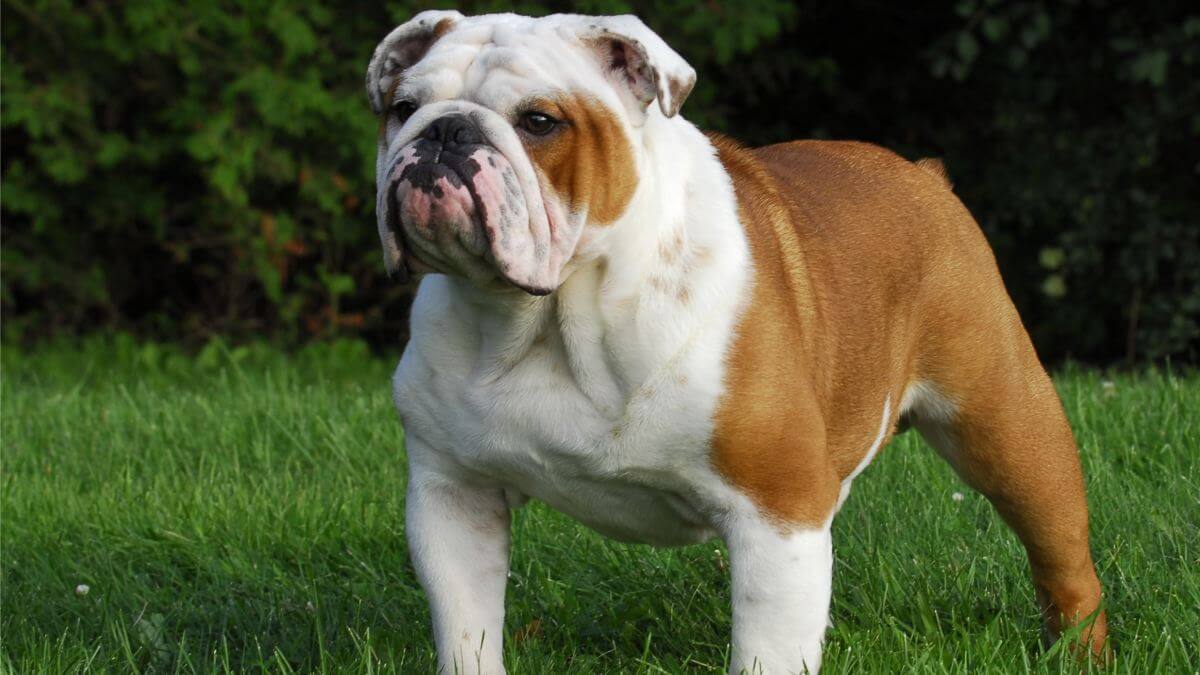


Home » The History of the Bulldog

This article was originally published in Showsight Magazine, June 2017 issue.
Bulldogs undoubtedly have one of the most interesting histories of all dog breeds, a history that continues to evolve. An indigenous British breed, it is thought that the breed (or its direct ancestor) has been a part of Britain’s canine population for well over 1,500 years. References to a unique fighting dog in Britain date to Roman times.
Theories abound about the origin of the breed, from being unique to Britain itself to a cross-bred descendant of Mastiffs or Mastiff types brought to the island by Romans or other early invaders. Victorian scholars had spirited debates about which breed came first, Mastiff or Bulldog, and which breed was the founder of the other.
The more likely scenario is they share a common ancestor. The leading theory is that the breed is unique to Britain and is a descendant of a naturally occurring brachycephalic type of dog. Other native breeds, particularly terrier varieties, likely were added to the mix.
What is certain is that this specific breed was developed from its ancestors as a bullbaiting dog. Bullbaiting likely developed because this type of dog tended to chase down loose bulls and hold them until they were caught. Eventually, this evolved into a “formal sport.” References to this activity date to at least the 11th century.
The bull was tethered, and the dogs were set upon him. Meat from a baited bull was desirable and, in some villages, was required by law. The unique conformation of the breed evolved purely from this “sport.” The dog appears to have had no other purpose. The dogs best suited and most successful at bullbaiting were ones selected for breeding, and a definitive type evolved.
Period writings describe the dogs in a bullfight as crouching, crawling, and then leaping at the bull’s face. Any dog that did not go for the face was immediately destroyed. Purity of blood was of utmost importance, as “no dog other than an out-and-out Bulldog can be relied upon to go straight for the bull’s head.” At various times in history, Bulldogs were also used to bait monkeys, bears, and even lions.
While bullbaiting held prominence as a “national sport,” eventually, its cruelty led to discussions of abolishing the practice. In 1802, the first bill to ban bullbaiting was introduced in the House of Commons. After heated debate, it was voted down. Finally, in 1835, the “sport” was outlawed.
The Bulldog was left with no real job. They were good ratters, and this was likely the breed’s last job. The Bulldog was universally despised by most citizens, who wanted to see it eliminated. Bulldog-terrier crosses were creating a dog suited for dog fighting, a “sport” that was more easily carried out indoors, away from the eyes of the law.
The breed earned the nickname “pot house dog,” as that was where the dog was generally found. The Bulldog was considered savage, and its owners of highly dubious character. Yet, these fanciers were devoted to their breed and cautiously guarded its purity.
The introduction of formal dog shows in 1859 saved the pure breed from certain extinction. There were literally a handful of purebred Bulldogs at the time, and it was from these last survivors that our breed ultimately evolved. The early dog shows saw Bulldogs and Bulldog types of varying sizes.
Classes were often offered for dogs under 20 pounds and over 45 pounds. Some breeders suggested that their large version, over 80 pounds, was the “true” Bulldog. One breeder, Frank Adcock, imported a large variety of Bulldogs from Spain, intending to make the breed larger.
It was well-known among fanciers that the mid-sized dogs of 40-50 pounds were best suited to the original job of bullbaiting. These fanciers saw crossbreeding with other types, particularly with Mr. Adcock’s new breed from Spain, as a real danger to the survival of the pure type.
To guard against this, the first Bulldog club was created on November 3, 1864. The objectives of “The Philo Kuon Society” included the perpetuation and improvement of the old English Bulldog. The club’s motto was “hold fast.” This club lasted only three years but is credited with the first attempt at a standard, referred to as “The properties of a perfect Bulldog.”
This historical document served as the basis for the official standard still in use today. In 1875, the formation of The Bulldog Club, Incorporated, in England marked a significant effort to save the breed from extinction. The club worked to establish the one correct type of Bulldog by creating an official Standard.
In the United States, The Bulldog Club of America (BCA) was formed in Boston in 1890. It was one of the first breed clubs to become a member of the American Kennel Club (AKC). The BCA drafted the United States version of the Standard in 1894, closely following the British document.
Revisions over the years addressed specific features, such as the declaration of the Dudley nose as a disqualification in 1914. More recently, the breed’s popularity has exploded. While always popular, its emergence as a “top 10” AKC breed has created challenges for breeders and the BCA.
Unscrupulous and careless breeding has led to health problems, which have been the focus of media criticism. However, these critiques fail to recognize the hard work of dedicated breeders and the National club to improve the breed’s health and well-being.
The Bulldog Club of America emphasizes health testing and has seen a dramatic increase in Bulldogs participating in health databases like the Orthopedic Foundation for Animals (OFA). This commitment ensures that the breed remains healthy, thriving, and vibrant.